A reflection on the Law 8/2013 Rehabilitation, Regeneration and Urban Renewal
By Federico García Barba
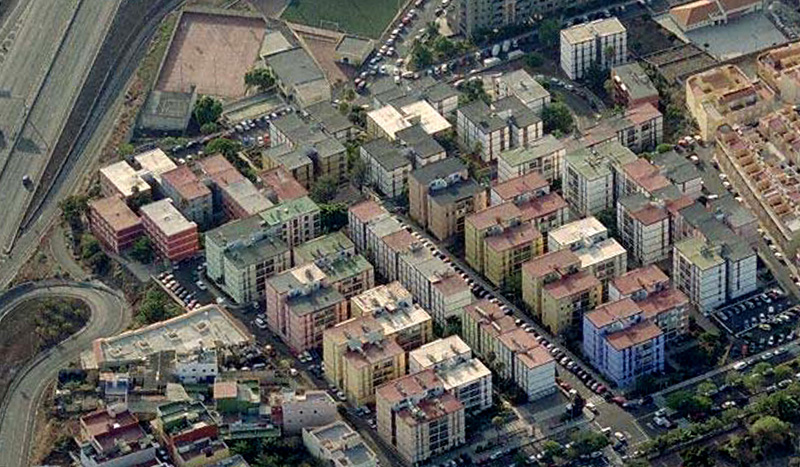 District of the Chumberas in La Laguna, Tenerife. The structures of these residential buildings are severely affected by aluminosis
District of the Chumberas in La Laguna, Tenerife. The structures of these residential buildings are severely affected by aluminosis
In Spain, the construction sector is going through a crucial time for the future. After more than five years of destruction of traditional economic model based on the promotion of new residential building, seems that institutions are betting heavily on a new path that will focus on the rehabilitation of existing housing stock.
It will be a process of radical change for the different players in the sector. One strategy that the central government supports up forcefully through the Ministry of Public Works and National Housing Plan 2013-2016. Since in 2008, compulsorily implanted Técnicade Building Inspection under certain conditions and, especially along 2013, the purpose of government is to mobilize the population to undertake the maintenance, rehabilitation and renovation of older homes. And thereby, promote the renovation of the damaged areas of cities. So, this year, have appeared successive laws that encourage the reorientation of architecture and construction activity towards improving the existing building.
This is what has happened with the Royal Decrees 233/2013 by regulating the State Housing Plan (LPEV) and 235/2013 on the energy certification of buildings (LCEE). And more recently, with the Law 8/2013 Rehabilitation, regeneration and urban renewal (LRRRU) to which to dedicate this reflection and briefly presented here.

On the whole Spanish state, today, There is land classified urbanistically able to accommodate the growth forecast for the next forty-five years. An indisputable fact but with a twist: those soils classified are placed in environments where it is likely little or no growth in demand. It is one of the serious collective nonsense that we inherited from a time cheerful and the housing bubble that helped sparked by some irresponsible.
In Spain is estimated housing stock exceeding 25 million units of which 55% is older than 30 years, five million two hundred thousand of these units, or approximately 20 % of total- exceeds 50 years old. Also, empty housing throughout the state exceeds 750.000 units right now.
Added to this is the need to correct the excessive energy that exists in the country. And, mostly, establishes an unsustainable dependence on imports of raw materials for the production of fossil fuels. At the same time, and for that reason,Europeaha Union set a target called 20-20-20, on energy and climate change and consisting of a reduction of 20% emissions of greenhouse gases, raising the production and consumption of renewable energy to 20% total and improve overall energy efficiency in another 20%. The latter issue particularly affects the residential building sector which presents remarkable constructive inefficiencies and excessive consumption for lighting and environmental conditioning of the interiors, heating and cooling.
Within this panorama, rehabilitation subsector represents today only 28 % of total construction in Spain. And, This is despite the widespread crisis that occurred in this area. Rehabilitation is far from what is usual in other euro zone countries, whose overall average production in this field is 13 points above.
 Crack estrutural defining the collapse of the building
Crack estrutural defining the collapse of the building
The LRRRU modifies both the Consolidated dela Floor Leyden current laws and decrees and other sectoral. Inter,the Sustainable Economy, the Construction Planning,PropiedadHorizontaly that of the Technical Building Code, due to which its impact will be important in everything related to urbanism, construction and architecture.
The law introduced in Title I an essential tool, Assessment Report of Buildings (IEE) which is configured as a technical element that forces the review exhaustively comprehensive collective housing buildings within certain maximum. This new document required relates to the review of conservation issues, accessibility and energy efficiency of all existing multi-family buildings that predate 1980.
The obligation of the Evaluation Report of the buildings will provide invaluable information for all to know the real situation existing buildings. And, consequently, specify the quality and sustainability of the housing current collective is the majority of the building area in this country.The present Leydeja the door open for the autonomous regions and local entities to expand the scope of this process just to open, other areas; also those where deemed appropriate and necessary to evaluate and analyze the quality dela building. Slo has occurred in parallel with tourism infrastructure in the case of the Canary Islands, for example. In this regard, there has also been recently approved Renovation and Modernization Act Islands Tourism (LRMTC)
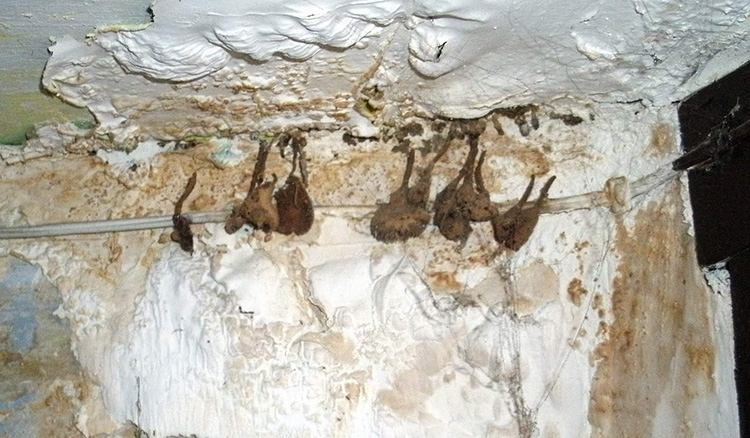 Wetlands losses caused by sewer pipes
Wetlands losses caused by sewer pipes
Assessing the state of residential building intended to be effected as called Technical Report Buildings (ITE), whose scope is limited but, with LRRRU, ITE becomes mandatory for all multifamily buildings before 1980. The IEE incorporates the basic inspection, but also two other issues that arise purely informative, accessibility and energy efficiency. Thus, the IEE must also recognize and evaluate the conditions of mobility and access to those same buildings under evaluation, in order to establish the degree of use of buildings for people with motor disabilities, visual or otherwise. With regard to energy efficiency, involves incorporating in one Porel Energéticaexigida documentola RealDecreto Certification 235/2013. Thus, the IEE must also determine the multifamily building energy rating and recommendations for improving their current thermal insulation. In the same connection, salvo has been a mandatory requirement of the EEC, certificate must provide in any real estate transaction for the purchase or lease of real property from recently.
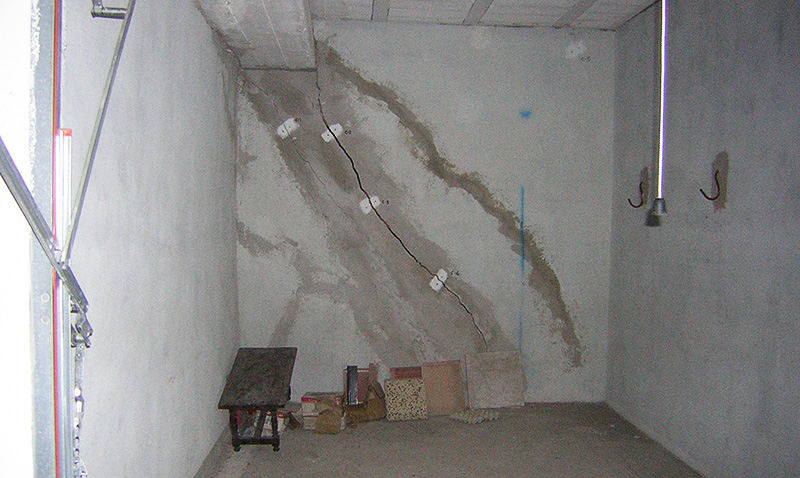 Fissure due to a seat supporting the building foundation
Fissure due to a seat supporting the building foundation
This IEE is also mandatory and must be done for all designated buildings before the end of the year 2015. Namely, in the next 18 months shall proceed to inspect a very important set of homes in this country, almost fourteen million units. Among other reasons, as a result of the commitment by Spain to the universal accessibility of citizens, in aplicaciónla Internacionalsobre Convention rights of Persons with Disabilities.
But the realization of this sets the IEE Inspection, opens interesting perspectives that relate to the State Plan for Housing 2013-2016. In the same, states that the possible works arising out of the IEE will be subsidized by 35% of its value constructive and technical documents required to complete (among themselves, IEE itself) an 50% more.
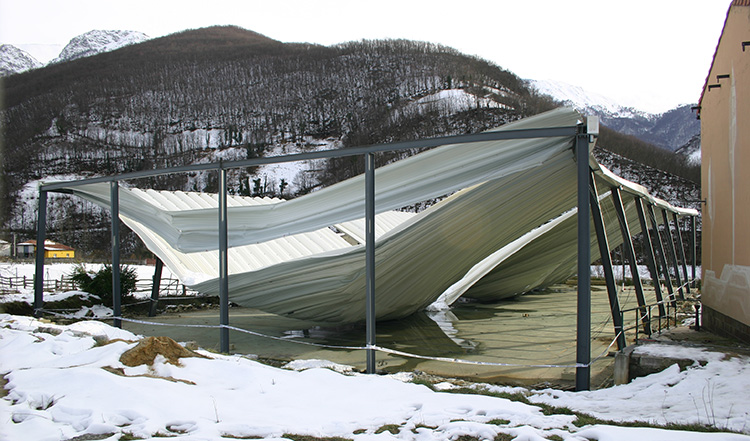 Total collapse of the support structure by calculating deficient construction elements
Total collapse of the support structure by calculating deficient construction elements
For this, should be taken of the relevant IEE, to be unfavorable character building in question have affected their storage conditions and / or health of its facilities, structural safety and power quality. The LPEV provides in Article 20 important to be awarded refundable grants to property owners, designed to address these issues and improve. En particular, and including, those that produce improvements related to structural problems affecting the overall stability of the building; of plumbing and drain; the presence of moisture due to poor waterproofing problems; as well as, those aimed at improving conditions for energy saving in partitions and carpentry; installing lifts and means to improve accessibility for people with reduced mobility, etc..
Aids are provided to a maximum of 11.000 € uros for vivienda or 100 m2 to cover the budget allocated annually in the General State Budget approved by the central government and for which there is already a commitment to contribute to the next state over several billions of € uros.
For this, the state entrusted to the Autonomous Communities to open the windows and services needed to process requests and assistance under the State Plan. Some communities already have these services implemented so will access more quickly to a budget as has happened with the Vehicle Renewal Plan will apply the criteria to serve those arriving first in order of arrival to the consumption .
In summary, this new legal provision introducing an obligation to proceed to check in the next two years all collective housing buildings built in Spain prior to 1980, what affects a large number of public and private housing.
With the next and likely occurred hundreds of thousands of buildings Assessment Reports, owners will have a tool to really know the value of real estate that have. And those who wish to make an investment in older buildings to be certain about their security, accessibility and energy likely. And, also have the support of a grant not negligible.
More information:
Royal Decree-Law 8/2011, of 1 July, pulse to rehabilitation
Legal Framework for Building Technical Inspections (ITE). BOE 07/07/2011
Royal Decree 233/2013, of 5 April, by regulating the State Plan to promote rental housing, edificatoria rehabilitation and regeneration and urban renewal, 2013-2016. (LPEV). BOE 10/04/2013
Royal Decree 235/2013, of 5 April, by approving the basic procedure for building energy certification
(LCEE). Legal Framework for Energy Efficiency Certification (EEC) BOE 13/04/2013
Law 8/2013, of 26 June, Rehabilitation, regeneration and urban renewal
(LRRRU) Legal Framework for Assessment Reports edificos (IEE). BOE 27/06/2013
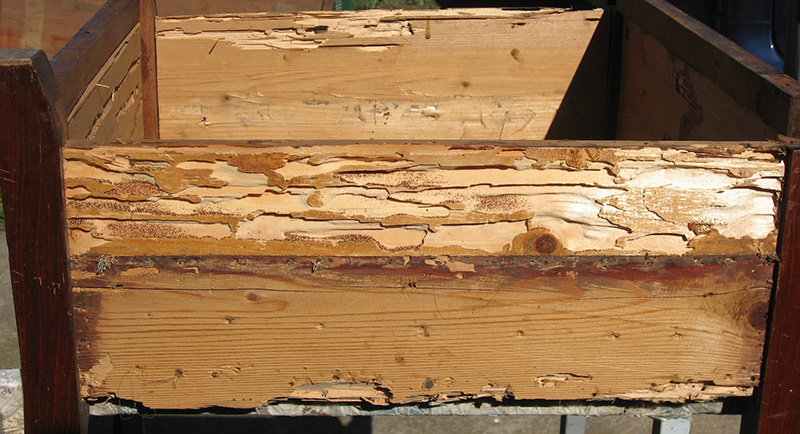 The attack of the plague of moths in their destructive action on wood
The attack of the plague of moths in their destructive action on wood























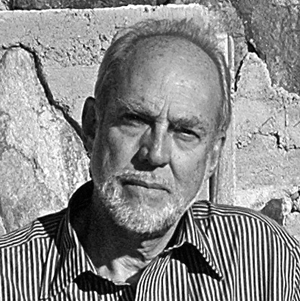
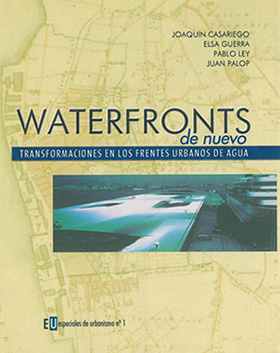




Very good summary…..I have solo aportarte of notes: replace “aluminosis” by “aluminous cement structure” and avoid the numbers …..that are in the Law….but mi understand about… Homes empty one 3% not for tearing his hair…..correct Rest, ITE expected to meet its rigor and committed…..is a great job
Hello, Paco.
I think this law continues an intelligent process to ensure that the sector is tipping in rehabilitation. The first thing you need is to know with certainty how the building is residential. And then encourage their users to fix the problems that exist.
You just need to the regions and municipalities to help spread the benefits of having a properly maintained buildings. And, also, establishing the mechanisms contributing to the owners to access funds that have already been established without being swallowed up by bureaucracy and paperwork guarantor.
To see that make the Canarian Institute of Housing because the money available will fly. The savvy in other communities in the state are already presenting their petitions or full speed.